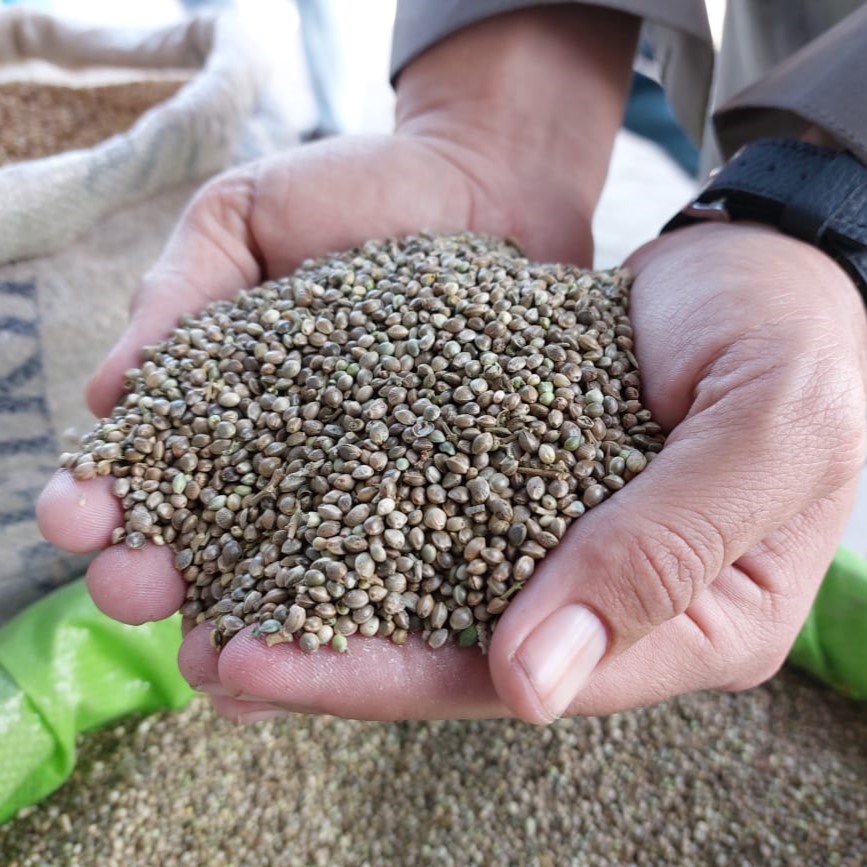Saeedullah Khan is a resident of the Warsak area in the Tira Valley. He is the owner of three acres of agricultural land. He has cultivated Red beans and vegetables on one acre and hemp on the remaining two acres.
Saeedullah’s cultivation of vegetables is his first experience, but he is pleased. He says that the vegetable production has been good. Most parts of the opium plant are used to make cannabis, which is illegal and addictive. This makes hemp cultivation problematic for farmers.
He says that some time ago, there were rumours that the government was allowing the cultivation of cannabis. As a result, people in the Tirah region were hopeful that not only would the cultivation of cannabis become legal, but the government would also provide facilities to the farmers. However, it seems that nothing of the sort is happening.
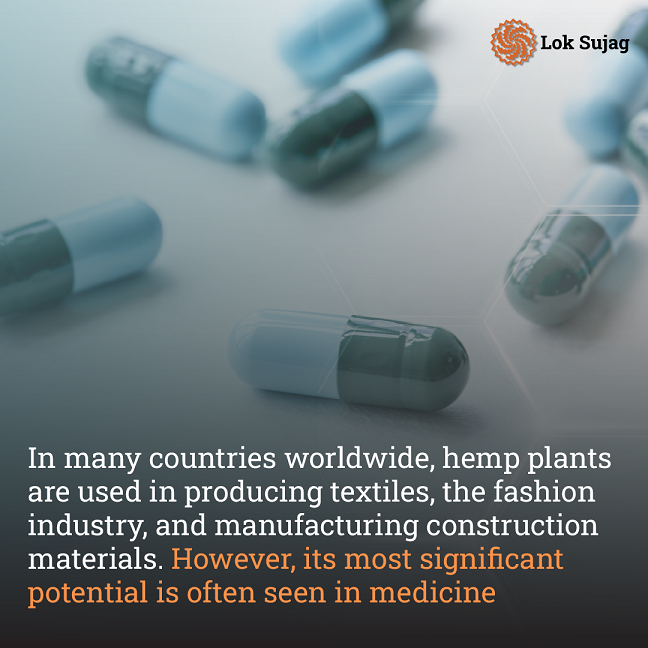
In the three tribal districts of Khyber Pakhtunkhwa, namely, Khyber’s Valley- Tirah, Orakzai, and different regions in Kurram, cannabis cultivation takes place. However, there is no information available from any government agency regarding the cultivation and overall production of cannabis in these areas.
In many countries around the world, cannabis plants are used in the production of textiles, the fashion industry, and the manufacturing of construction materials. However, most of its consumption is observed in medical science.
Medications derived from cannabis, particularly those containing compounds like THC and CBD, have shown promising results in the treatment of various conditions, including Parkinson’s disease (tremors), epilepsy (seizures), sclerosis (nerve stiffness), severe pain, certain forms of cancer, AIDS, Alzheimer’s, and more.
In several developed countries, including the United Kingdom and the United States, doctors are authorised to prescribe medications derived from cannabis, such as those made from marijuana, for the treatment of certain conditions.
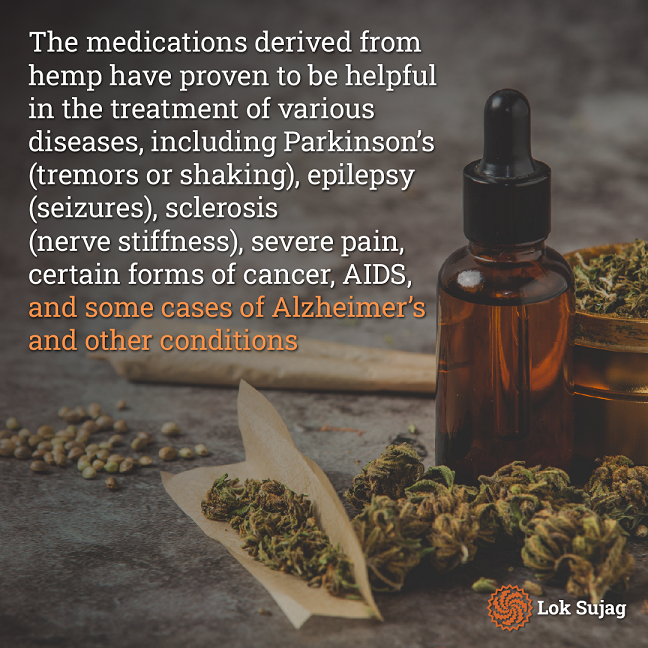
However, the United Nations Office on Drugs and Crime stated in its 2022 report that, following the legalisation of cannabis in North America, there has been an increase in tax revenue collection. Nevertheless, there has also been a rise in psychological disorders and suicides among cannabis users.
The globally renowned ‘Forbes Magazine’ reported in October that, according to the National Cannabis Industry Association, there is a rapid increase in the demand for cannabis worldwide. Therefore, it is estimated that the legal global trade volume of cannabis will reach up to 55 billion dollars by 2027. The United States is expected to contribute approximately 43 billion dollars to this figure.
The debate on legalising cannabis cultivation in Pakistan began in April 2020 when the former Prime Minister, Imran Khan, directed the Ministry of Narcotics Control to work in collaboration with the Ministry of Science and Technology, Ministry of Food Security, and Ministry of Commerce to formulate a framework for cannabis cultivation, medicinal preparations, and exports.

The decision to initiate limited-scale cultivation of cannabis was made after consultation among the authorities of all four federal ministries. It was also decided that the Anti-Narcotics Force would oversee the cultivation of cannabis in the designated areas.
In 2021, the Khyber Pakhtunkhwa government decided to survey cannabis cultivation in the districts of Khyber, Orakzai, and Kurram. The responsibility for this survey was entrusted to the Department of Pharmacy at Peshawar University.
Professor Fazal Naser, the director of this project, informed Lok Sujag that the survey in all three districts began in June 2021 and was completed within six months. The project incurred a cost of 1.43 million rupees.
He says that according to the data collected from modern technology and local markets, hemp is cultivated on 49 thousand acres of land in all three districts. This cultivation yields 500,000 kilograms of cannabis annually.
He revealed that, in terms of acreage, Orakzai is the district with the highest hemp cultivation; Tirah Valley of District Khyber stood in second place, while District Kurram is in third place. However, the best production is in the Tirah Valley.
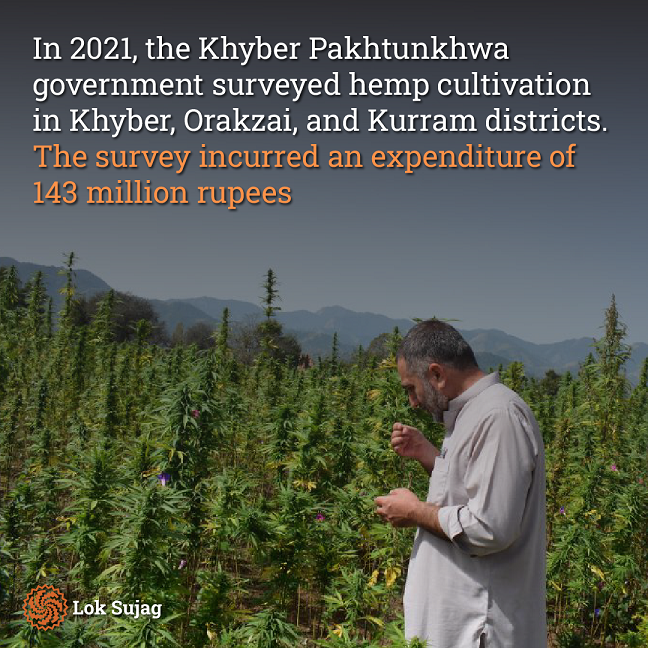
Professor Fazal Naser says the government should establish two factories to extract various materials or chemicals from hemp. Each unit would cost approximately 6 to 8 billion rupees.
Small units, valued between one and one-and-a-half billion rupees, could also be set up with the help of the private sector.
This report, based on the total area under hemp cultivation and the annual production of cannabis, was compiled in December 2021 by the Khyber Pakhtunkhwa Economic Zones Development and Management Company (KPEZDMC).
Javed Iqbal Khattak, the Chief Executive Officer of Khyber Pakhtunkhwa Economic Zones Development and Management Company (KPEZDMC), says that the initial report on bhang has been sent for review to the Small Industries Development Board and the Department of Planning and Development. The recommendations from these institutions and those from KPEZDMC will be compiled to prepare the final report. Practical steps for investment will also be initiated as part of the process.
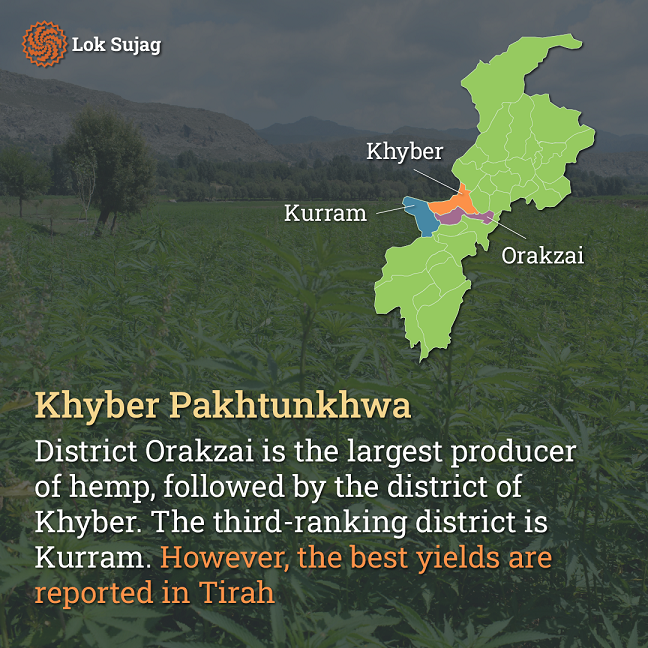
He says that access to the global market for materials obtained from hemp can be facilitated, and for this purpose, there is approved land near Bara, a tehsil in the Khyber district. This area, covering approximately one thousand acres, could be used to establish units for processing hemp and terminals for large trucks heading towards Afghanistan.
He believes that when the legal acquisition of materials from bhang begins, it will lead to better compensation for farmers in Tirah, Orakzai, and Kurram. This may also encourage the establishment of small processing units in the relevant regions.
Tirah Mushroom Agricultural Development Organization has been working in the Tirah Valley for the past four years to promote the cultivation of legal crops that provide better income alternatives than hemp.
The organisation’s president, Fazal Rabi, states that farmers cultivate hemp on around ninety per cent of the land in these regions. The dependence on agriculture supports the livelihoods of 200,000 to 300,000 people in the area.
However, after the merger of tribal areas, the business of cannabis has become challenging, and its rates have also significantly decreased.
Also Read
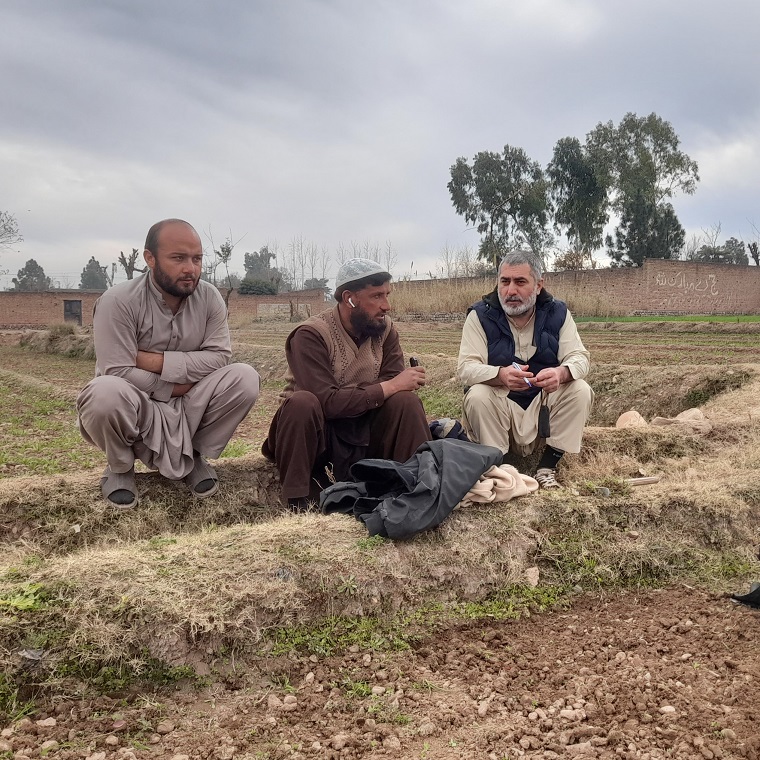
Khyber's agricultural crisis: Barren lands, disputed canals, and awaited dam solution
He says that the soil and climate in this area are conducive to hemp cultivation, and farmers have the expertise in its cultivation. If the cultivation of hemp is initiated on an experimental basis, the government should prioritise these regions so that people can benefit and resources can be used effectively.
Fazal Rabi says that their organisation, with the assistance of the Department of Agriculture, has provided training and equipment to 120 farmers to cultivate crops other than hemp, such as mushrooms (khambiyan) and off-season vegetables. For the first time, ten local women have also received training through the support of a relief agency.
The Provincial Department of Agriculture has initiated saffron cultivation on ten acres of land in the village of Tirah region.
Additionally, they have established orchards on 310 acres and applied advanced techniques like grafting to cultivate 35,000 wild olive trees.
The Director of the Agriculture Department in Khyber District, Zia Islam Dawar, reveals more than one crore (ten million) wild olive trees in Khyber.
The plan is to complete the grafting process for one and a half lakh (150,000) trees in the next five years.
He says that the Department of Agriculture in Tirah village is trying to increase the cultivation of crops other than hemp.
“In the current year, high-quality potato seeds, sunflower seeds for five hundred acres of land, and tomato seeds were provided to local farmers. In addition, 20 thousand saplings of apricots were distributed to discourage the cultivation of hemp or poppy.”
Zia Islam Dawar says there was no consultation with the Department of Agriculture regarding hemp cultivation in Tirah village. However, in the case of hemp cultivation, local people can only harvest one crop per year, while the land remains vacant for five months. There is a dire need for assistance to local farmers in cultivating other crops.
Saeed Mohammad, a farmer in Tirah village, has been cultivating crops other than hemp for the past two years. He says that in the previous year, he cultivated turnips and potatoes, and the yield was quite good. The village of Tirah is suitable for cultivating crops such as corn, tomatoes, peas, beans, and melons. However, wild animals pose a significant threat to all crops except hemp.
Published on 5 Dec 2023
